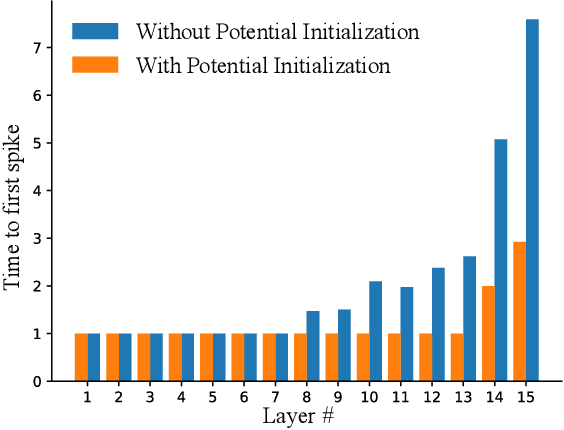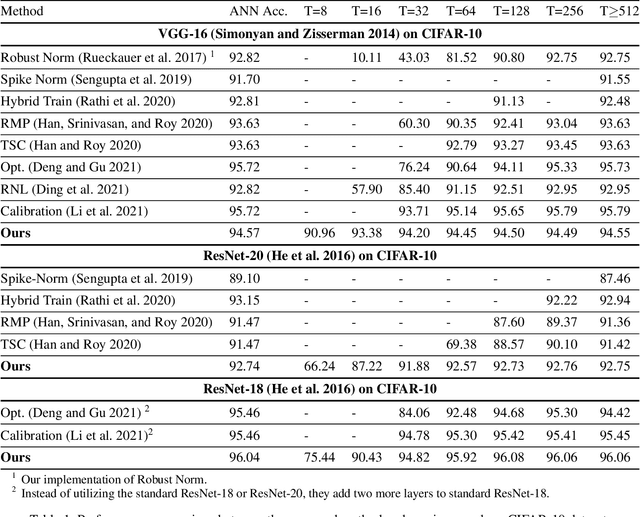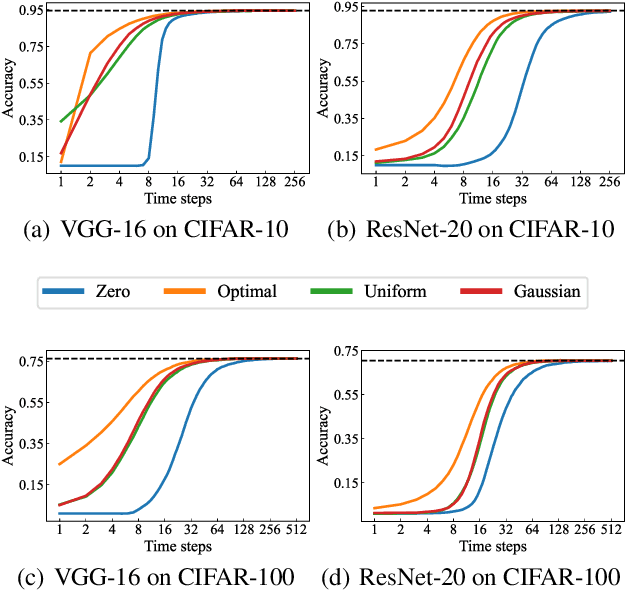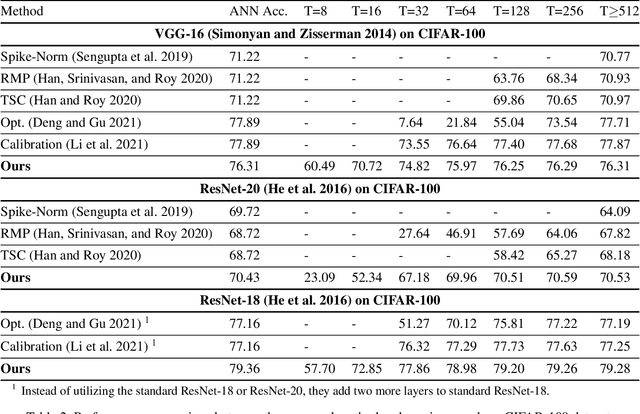Optimized Potential Initialization for Low-latency Spiking Neural Networks
Paper and Code
Feb 03, 2022



Spiking Neural Networks (SNNs) have been attached great importance due to the distinctive properties of low power consumption, biological plausibility, and adversarial robustness. The most effective way to train deep SNNs is through ANN-to-SNN conversion, which have yielded the best performance in deep network structure and large-scale datasets. However, there is a trade-off between accuracy and latency. In order to achieve high precision as original ANNs, a long simulation time is needed to match the firing rate of a spiking neuron with the activation value of an analog neuron, which impedes the practical application of SNN. In this paper, we aim to achieve high-performance converted SNNs with extremely low latency (fewer than 32 time-steps). We start by theoretically analyzing ANN-to-SNN conversion and show that scaling the thresholds does play a similar role as weight normalization. Instead of introducing constraints that facilitate ANN-to-SNN conversion at the cost of model capacity, we applied a more direct way by optimizing the initial membrane potential to reduce the conversion loss in each layer. Besides, we demonstrate that optimal initialization of membrane potentials can implement expected error-free ANN-to-SNN conversion. We evaluate our algorithm on the CIFAR-10, CIFAR-100 and ImageNet datasets and achieve state-of-the-art accuracy, using fewer time-steps. For example, we reach top-1 accuracy of 93.38\% on CIFAR-10 with 16 time-steps. Moreover, our method can be applied to other ANN-SNN conversion methodologies and remarkably promote performance when the time-steps is small.
 Add to Chrome
Add to Chrome Add to Firefox
Add to Firefox Add to Edge
Add to Edge